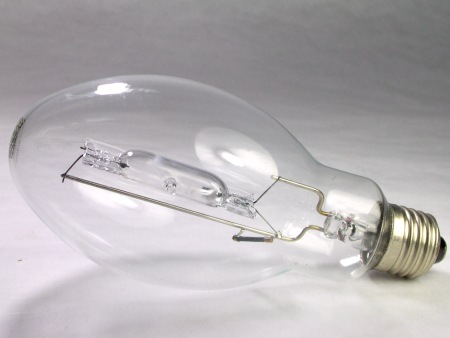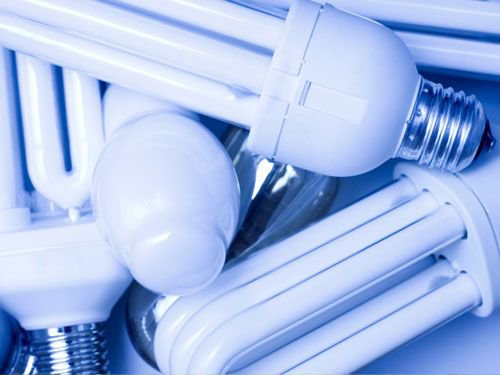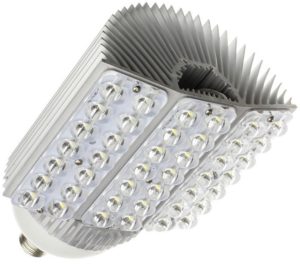Not long ago we told you about the different advantages offered by LED streetlights in road and garden lighting. On this occasion, we are going to present some of the technologies that have been used to light towns and cities.
Urban lighting
It is becoming more and more common to see elements with LED technology in urban lighting. Not too long ago, the main technology used for this purpose was discharge lamps.
These old luminaires offered a significant amount of light, but if a study of scotopic vision (that which occurs in very low lighting conditions) is carried out, their performance is seriously affected.
When comparing this type of light with that achieved with the new LED lamps, the latter are perceived as brighter and therefore safer. Some studies show how peripheral vision while driving is improved by 100%, improving driver reaction times by up to 25%.
Road lighting technologies
We will now compare the different technologies that have been used in urban lighting, in spaces such as streets, gardens or squares.
| Technology | Life (hours) | Lm/W | Color temperature | CRI | Power on |
| Incandescent | 1.000 – 5.000 | 11 – 15 | 2.800K | 40 | Instantaneous |
| Mercury vapor | 12.000 – 24.000 | 13 – 48 | 4.000K | 15 – 55 | Up to 15 min |
| Metal halide | 10.000 – 15.000 | 60 – 100 | 3.000 – 4.300K | 80 | Up to 15 min |
| HPS | 12.000 – 24.000 | 45 – 130 | 2.000K | 25 | Up to 15 min |
| LPS | 10.000 – 18.000 | 80 – 180 | 1.800K | 0 | Up to 15 min |
| Fluorescent | 10.000 – 20.000 | 60 – 100 | 2.700 – 6.200K | 70 – 90 | Up to 15 min |
| CFL | 12.000 – 20.000 | 50 – 72 | 2.700 – 6.200K | 85 | Up to 15 min |
| LED | 50.000 – 100.000 | 70 – 150 | 2.700 – 6.400K | Instantaneous |
Incandescent lamps
They are based on heating a metal filament with a glass encapsulation. They are characterized by their low cost, good color rendering and remarkable inefficiency. Only 10% of the energy consumed is transformed into light. Their service life is very short and they have to be replaced very frequently.
Mercury vapor lamps
They improve efficiency and lifetime compared to incandescent lamps. They offer a rather unpleasant blue-greenish light. They are very polluting, as they contain mercury. Part of the light they emit is ultraviolet.

Metal halide lamps
They work at high pressures and temperatures. This means that the luminaires must be specially prepared to avoid any type of accident or fire if the lamp fails. The light they emit reproduces colors quite well. In addition to the initial ignition time, if they are turned off, it is necessary to wait between 5 and 10 minutes until they can be turned on again. They contain mercury and lead.
Sodium vapor lamps
There are two different versions: high pressure (HPS) and low pressure (LPS), with HPS being the most popular. Their efficiency is excellent, but the light they provide is of very low quality. LPS, for example, emit light in only one frequency of the spectrum, which prevents colors from being distinguished. Like other discharge lamps, their components include lead and mercury.
Fluorescent lamps
With an efficiency halfway between incandescent and HPS alternatives, they became popular in the late 1930s. The light offered is not very directional, which does not allow luminaires to be installed too high. Again there is the problem of mercury.

Compact fluorescent lamps
They are better known as energy-saving bulbs or CFLs for its acronym in English. They have good efficiency and CRI. Their useful life is greatly reduced if on/off cycles are frequent and they also contain mercury, making them difficult to recycle.
LED lamps
Based on semiconductors, LEDs are highly efficient, durable and do not contain environmentally harmful materials. Although their price was initially high, they are now an affordable technology. Among its advantages are its low energy consumption, high CRI, fully dimmable and the fact that it is directional, which reduces light pollution.

Undoubtedly, LED street lighting solutions are the best option to illuminate all kinds of spaces and public roads, being safe, resistant and very efficient.

